For Floridians hoping to cool off, the nearest mountains are the Appalachians in TN/NC, i.e., the Great Smoky Mountains. It’s an 11-hour drive from Palm Beach County to Cherokee, NC, the southern gateway to Great Smoky Mountains National Park and a 12-hour drive to Gatlinburg/Pigeon Forge, TN, the northern gateway and home to Dollywood. In a small airplane, however, the trip can be done in approximately 3.5 hours to KGKT (550 nm). A 3.5-hour flight in a vibrating noisy bathroom-free piston-powered airplane is too much for most pilots and nearly all passengers. Where to stop, then?
The simplest route from flat Florida to mostly-flat eastern Tennessee bends around the west of the Appalachian Mountains via Chattanooga. Why go over these mountains, which generate all kinds of clouds and bumps, when you can instead relax on windward side, entirely free of turbulence and with a much wider range of altitudes to choose from? (as shown below, the FAA considers any altitude lower than 6,600′ to be risky with respect to terrain)
On our way to Oshkosh, however, we enjoyed a rare day on which thunderstorms were not forecast, except on both coasts of Florida (see Garmin Pilot app screen shot from halfway through our first leg). The winds aloft were forecast to be light and therefore there was no risk of powerful downdrafts on the lee side of the mountains. So we planned a scenic crossing of the Appalachians with a first stop in Lake City, Florida (KLCQ). The kids learned to appreciate our pool table by playing on a table with trashed felt using cues with no tips.
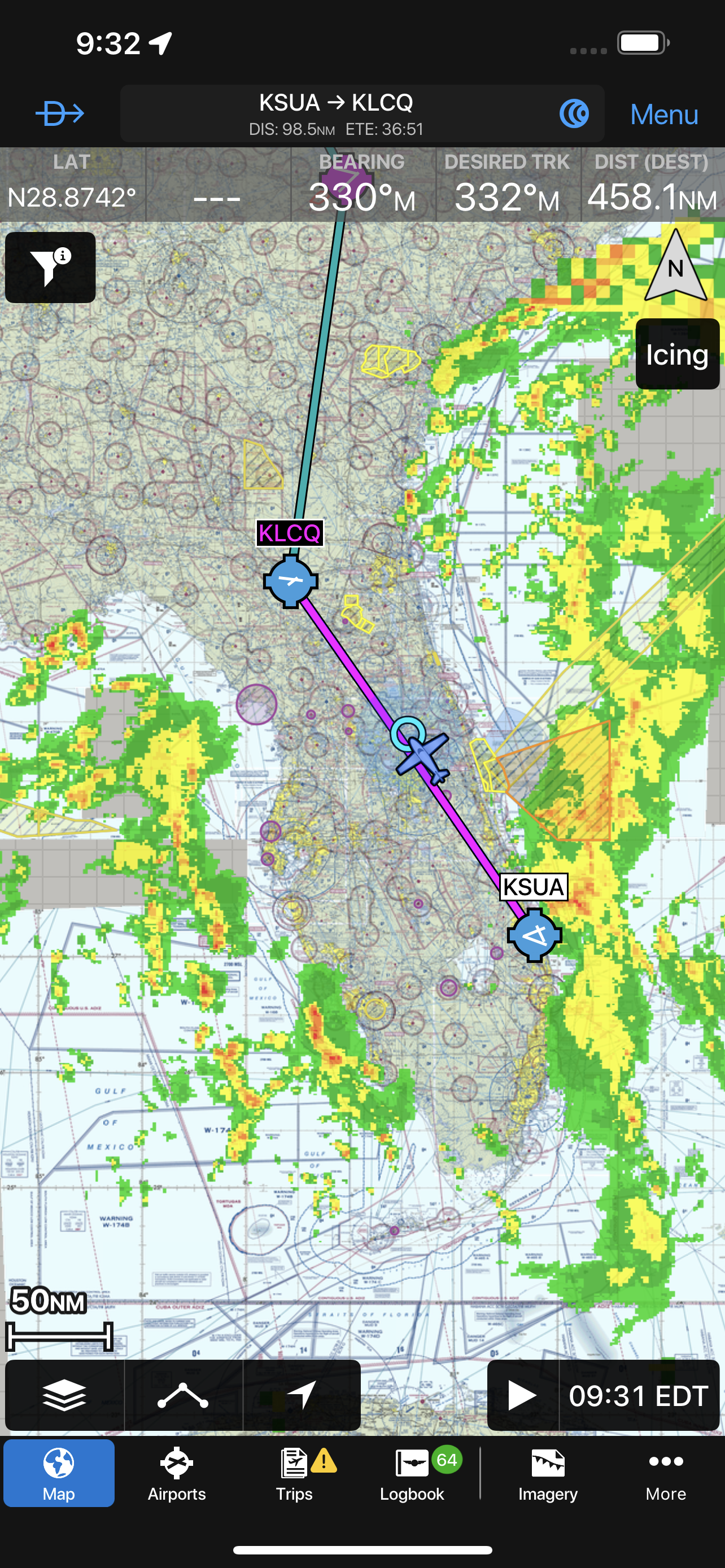
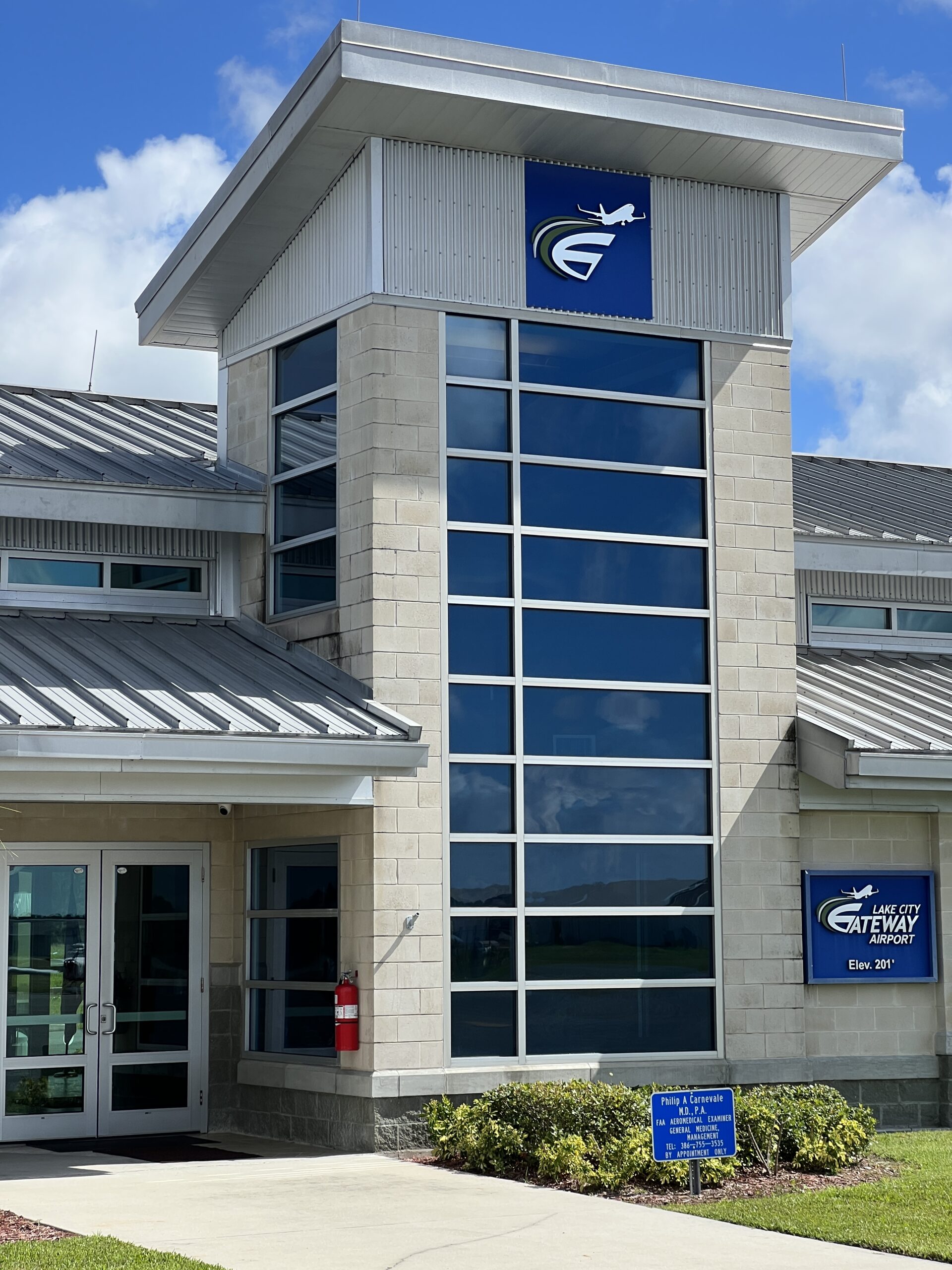
Our next stop was KDNL, the “downtown” airport for Augusta, Georgia. There is a flight school on the field and the learning continues even in the men’s room, however Ketanji’s panel of biologists might define the term “men”:
We hopped in the courtesy car and headed downtown to the Morris Museum of Art, “the oldest museum in the country that is specifically devoted to the art and artists of the American South.” It is situated on an attractive river walk and right next to a good restaurant, Augustino’s, within the Marriott hotel.
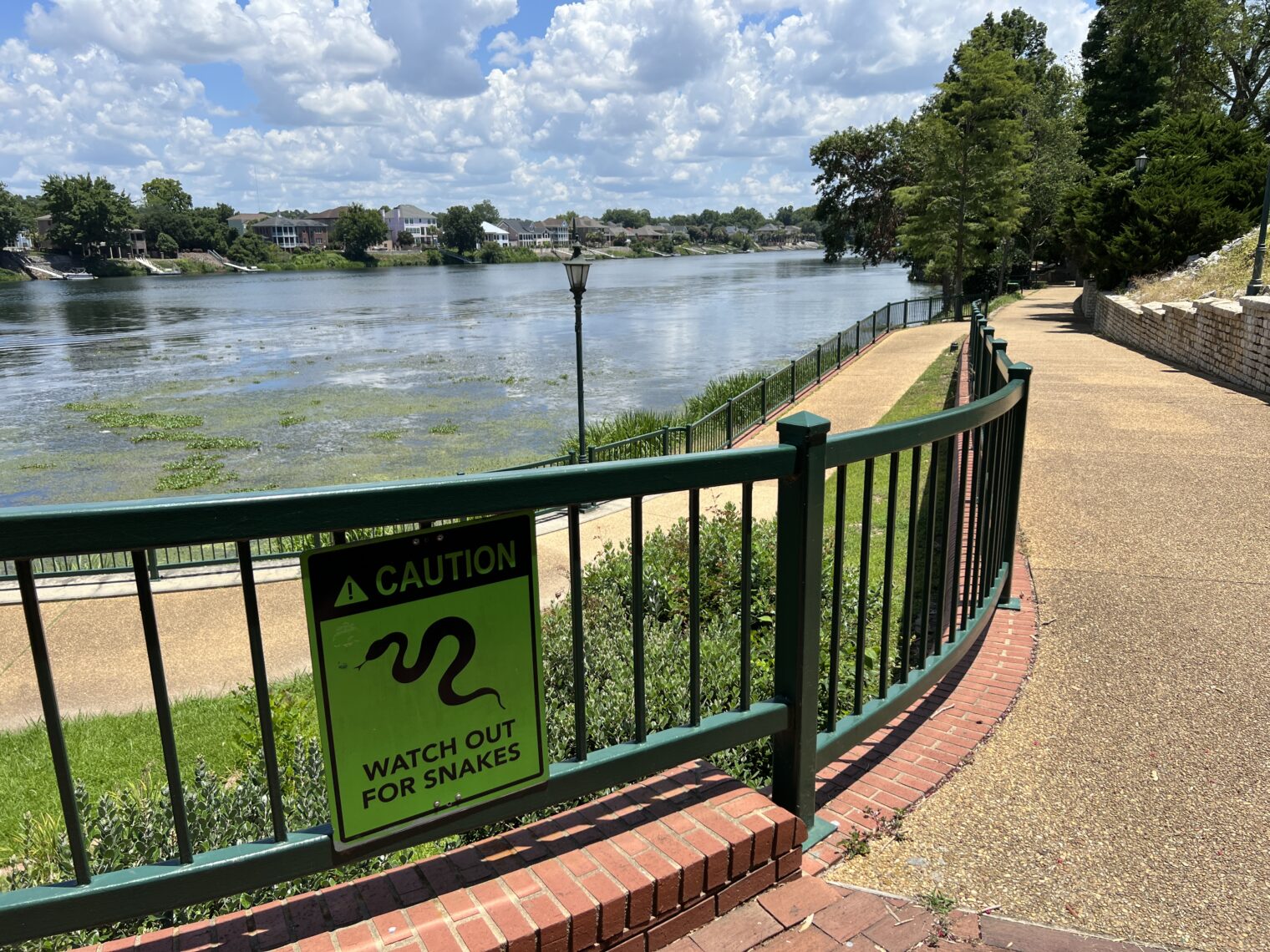

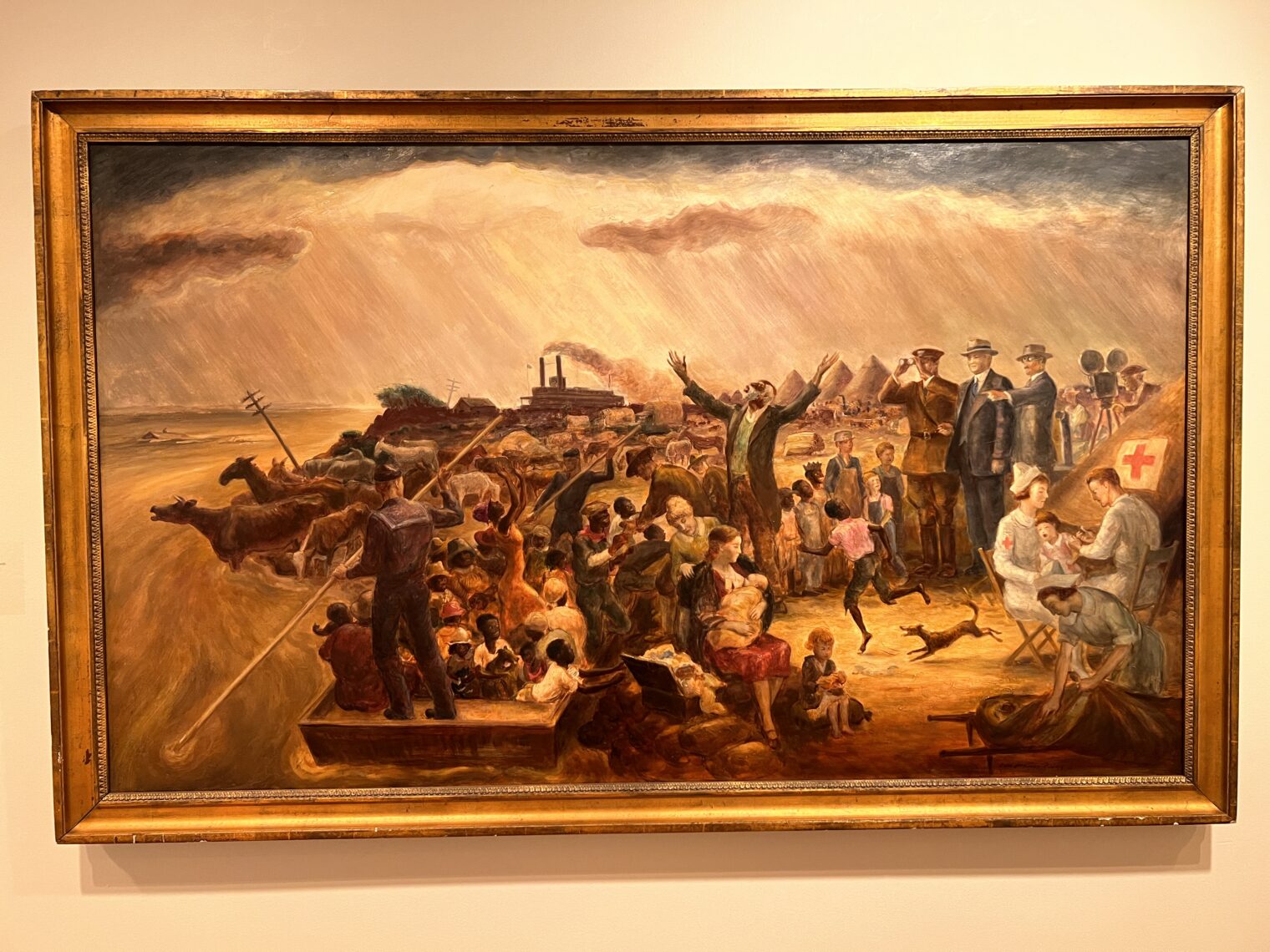
One of the paintings above is John Steuart Curry’s Hoover and the Flood, celebrating the heroics of America’s only engineer-turned-President, the most skilled technocrat ever to attempt technocratic management of the U.S. economy, in the context of the Climate Change-induced Great Mississippi Flood of 1927.
The final leg required a climb to 10,500′ and weaving to stay out of the clouds and bumps. The forecast was accurate regarding the lack of thunderstorms, but there was still some pop-up convection that made an indirect route seem wiser.
A Cirrus about 15 miles north of us apparently went into one of the above small rain showers and reported “severe turbulence” to Air Traffic Control (“large and abrupt changes in altitude and/or attitude and, usually, large variations in indicated airspeed. The airplane may momentarily be out of control. Occupants of the airplane will be forced violently against their seat belts.”). A combination of NEXRAD and ATC kept us out of anything upsetting. Upon landing, we found that our Enterprise Cadillac(!) sedan had been pulled up next to our airplane by the alert line staff at KGKT.

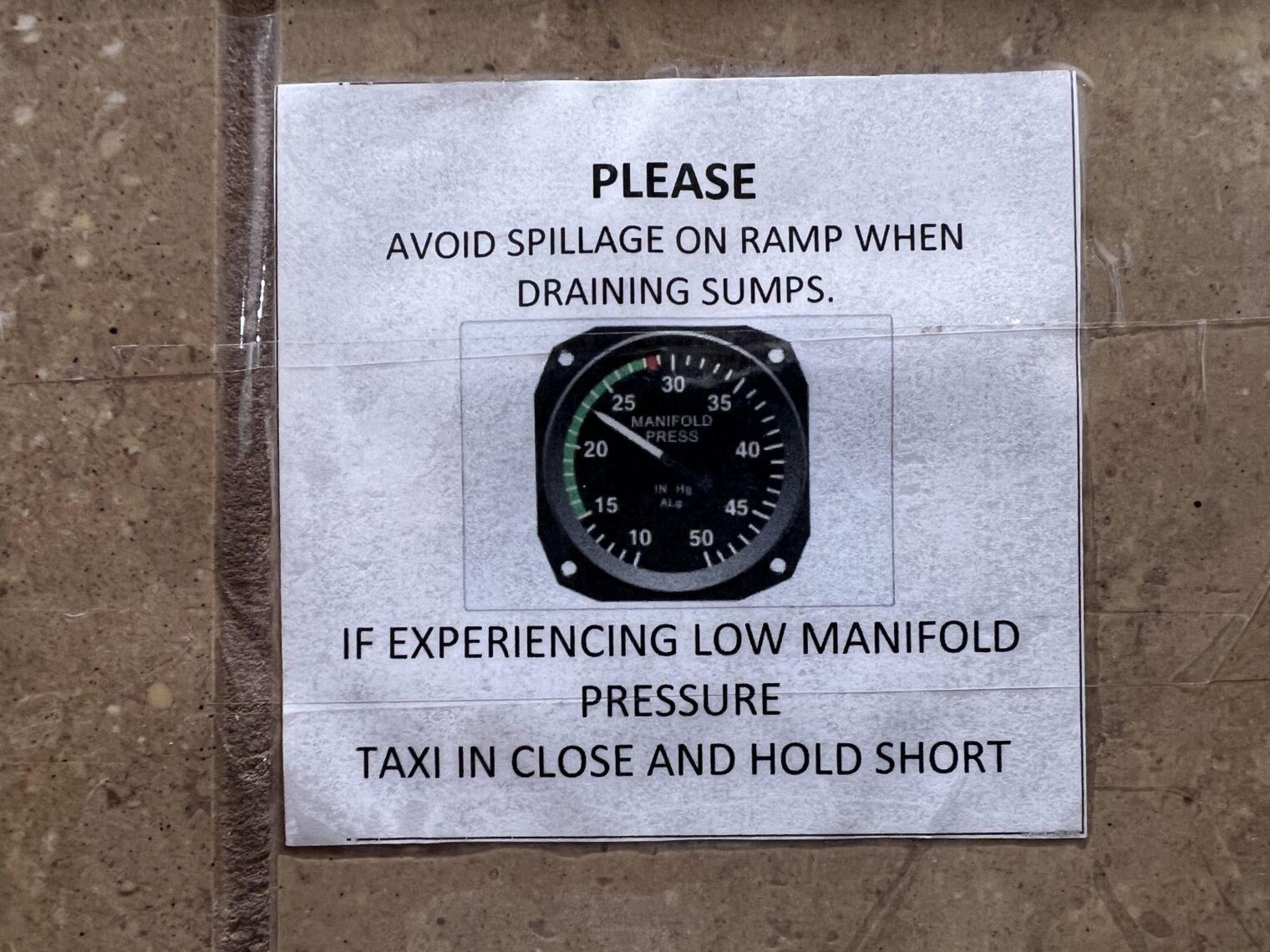

Wasn’t Carter an engineer? Nucular?
Mitch: Jimmy Carter was trained to operate a nuclear power plant (inside a submarine), but not to design a nuclear power plant (what MIT would call “nuclear engineering”).